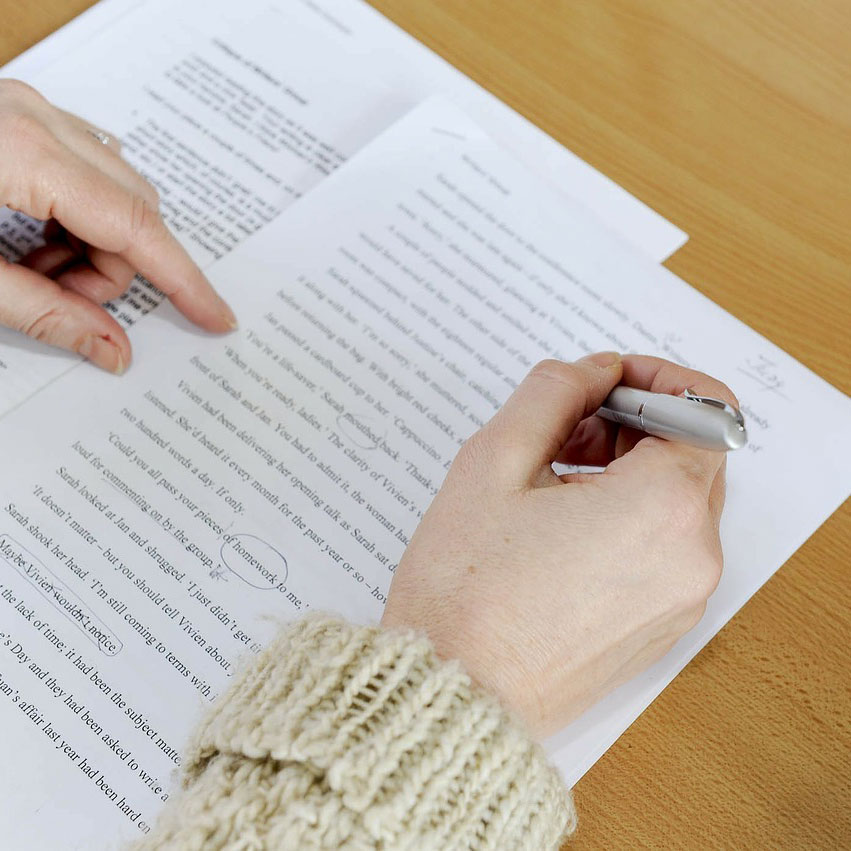Book Production Process
Welcome to an outline of our book production process. Follow the arrows to read about each step involved in taking ideas from brain to book.
First Draft
The first step in writing a book is to produce a first draft. This is a manuscript with a beginning, middle, and end that may need a lot of revision (and often does). Sometimes a subject matter expert hires a ghostwriter to help produce a manuscript.
If a ghostwriter is used, the expert in the field provides the ghostwriter material to work with, perhaps through interviews or in the form of an incomplete draft or presentation notes. The ghostwriter may also do independent research in the subject area.
Revision
After the first draft is complete, the writer begins revising it. If the writer is unsure how to improve the work and could use an outside perspective, or is simply weary of the writing process and wants a boost, the writer may enlist the help of a developmental editor.
The developmental editor evaluates the manuscript with respect to the writer’s objectives for the book. The editor makes recommendations for adding and deleting material and for reorganizing material so it will have maximum impact. The editor may also suggest that parts of the book be rewritten in a different style or given different emphasis. Developmental editing concerns the book’s content and takes place mostly at the level of chapters and sections of chapters.
Copyediting
When revisions are complete—no more rewriting is expected—the manuscript should be delivered to a professional copyeditor.
The copyeditor corrects grammar and usage, punctuation, and spelling as well as unclear or awkwardly expressed ideas. If the book cites other sources, the copyeditor ensures that these sources are cited correctly. The copyeditor also checks that text referring to graphic elements does so correctly and notes where graphic elements should be placed. Finally, the copyeditor can format the manuscript using Word styles so that it will flow smoothly into page layout. The author reviews the edits, discusses them as needed with the editor, and approves the final copyedited manuscript.
Design and Page Layout
A book needs an attractive and eye-catching cover, and the interior pages need to be designed for consistency, legibility, and aesthetic appeal.
An author who is publishing independently consults with the designer and has input into the appearance of the book. Figures, tables, photographs, and other graphic elements may be provided by the author, but for the sake of a consistent and professional look, the designer may need to re-create them. If the book needs materials the author doesn’t have, the designer can create, purchase, or commission art work.
The text is “flowed” into Adobe InDesign, and then the page layout is fine-tuned. The output of this step is a PDF file of the pages as they would appear in a printed book.
Proofreading
Once the book is laid out, the pages should be delivered to a professional proofreader.
Proofreading is done as a final quality control measure, both to catch any errors not corrected during copyediting and to catch any errors introduced during layout. The author reviews the proofread pages, discusses changes as needed with the proofreader, and approves the final proofread file. Changes from this step, which should be minor, are incorporated into the book’s laid-out pages. The book should go through multiple rounds of review to confirm all changes are made correctly.
Indexing
An index is not a requirement for a book, but nonfiction books often include them to help readers quickly find key ideas.
An index can be developed once page numbers have been finalized. Authors may write an index manually or use software to generate one, or they may employ a professional indexer who will use specialized software and expertise to create the index. The index is added to the book.
Printing and Ebooks
The file that comes out of proofreading (and indexing, if used) can be sent to a printer to be turned into hard-copy books and converted into an ebook format.
One printing platform that many independent authors use is Amazon’s CreateSpace, but there are a number of others, each with its own technical requirements. The file can also be converted into an ebook for a variety of formats, such as Amazon’s Kindle, Apple’s iBooks, and Barnes & Nobles’ Nook. Again, each platform has distinct requirements, so it is helpful to know before design starts where the author plans to sell the book.






